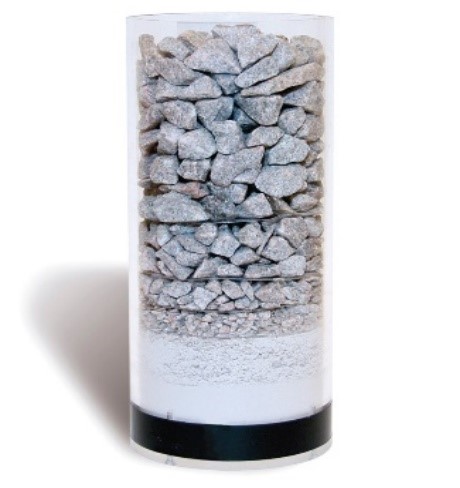Asphalt Pavement
Engineering+Experience+Common Sense = Good Pavement.
We all know what asphalt is – or do we? There are many names to refer essentially to the same thing: Asphalt, Asphaltic Concrete, Blacktop, Tarmac, Macadam, Hot-Mix Asphalt, etc. What is it? One short definition from the Asphalt Pavement Alliance says: “Hot Mix Asphalt (HMA) is a combination of approximately 95% stone, sand, or gravel bound together by asphalt cement, a product of crude oil.” Seems reasonable.


Delivering a good asphalt pavement project involves several basic steps from design to construction:
- A good understanding of the traffic volume that will traverse the pavement. The types of vehicles and the daily number of vehicles traversing the pavement as well as the design period expected for the project. Typical pavement design periods are 20 to 30 years. Typically, traffic loading is expressed in Equivalent Single Axle Loads (ESALs).
- Special traffic demands. Facilities such as trucking terminals, container storage yards, airfields, ports and other facilities which handle heavy loads and use large forklifts or specialty material handlers will impose shearing loads and concentrated loads on pavements. In some cases, asphalt pavement is simply not the type of pavement best suited to handle certain kinds of vehicles and loads.
- A reasonable understanding of soil subgrade conditions. Intuitively, a firmer subgrade will require a less substantial pavement structure (less aggregate base and asphaltic concrete) than a weaker, less stable subgrade. Subgrade conditions for design purposes are typically expressed as the California Bearing Ratio (CBR), soil resilient modulus (Mr), soil support value (S), modulus of subgrade reaction (k), etc. However, the most common parameters for asphalt pavement design are CBR and M A subsurface exploration and laboratory testing program should be executed as part of most pavement designs. Reasonable effort to better understand subgrade conditions for design purposes can translate in significant construction cost savings.
- Correctly applying the pavement design methodology. The pavement design methodology can be dictated by the owner, such as any Department of Transportation or military branch, or can be selected by the designer based on local practice and experience. Two main design methodologies remain in current practice: empirical methods such as AASHTO 1993, and mechanistic-empirical methods such as AASHTO Mechanistic-Empirical and PCASE (Defense Department). In some instances, pavement design for low traffic volume applications such as parking lots is based primarily on local experience.
- Proper construction procedures and quality control. The contractor and inspector/testing agency must communicate and work together to ensure that subgrade conditions and the constructed pavement structure comply with the design assumptions. Major benchmark issues include: a firm and stable subgrade; sub-base and base courses (crushed stone base, asphaltic concrete base) that are properly placed and compacted; placing the asphaltic concrete layers (binder and surface course) at the correct thickness and temperature range, under the right weather conditions, and properly compacting the asphalt using a rolling pattern compatible with the asphaltic concrete mix being placed.
- An experienced and knowledgeable construction crew. Overlooking small details and basic procedures can have detrimental, long-term effects on the constructed asphalt pavement which can result on a shortened pavement life and/or unsatisfactory pavement performance. Qualifying the paving contractor based on successful project performance and key personnel experience can enhance the quality of the pavement and reduce the risk of workmanship-related problems.
These and other factors play key roles in achieving a successful pavement that will perform as designed by the engineer and as expected by the owner. However, based on our experience, there are two mayor issues which will doom any pavement, regardless of how well the pavement is designed and constructed:
- Poor subgrade conditions
- Inadequate drainage
A stable subgrade and good drainage can compensate for mistakes and deficiencies during pavement construction and even for thinner-than-designed pavement sections. Conversely, poor subgrade conditions, poor drainage, or both, can drastically reduce the service life of any pavement, regardless of how well it is constructed.
Relying on Geo-Hydro’s wealth of asphalt pavement design and construction QC experience will ensure that your pavement will perform as expected throughout the life cycle of your project. Call us. We can help.
